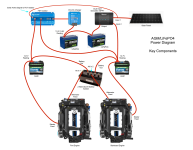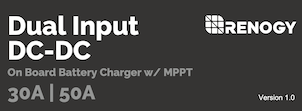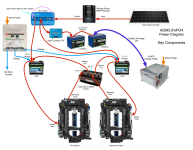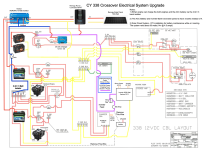A few things that I need to be mindful of is that the boat uses power when sitting at the mooring (or in the driveway for that matter). All small amounts of power, but they can add up over time. . . Xantrex, Stereo, Mercathodes.
I also need to be mindful about the Mercruiser Smartcraft system, as that is voltage sensitive, and I had voltage warning/faults during my first year with the boat. That was my original incentive to add the 100 watt solar system.
I've also been chasing an electrical gremlin where the Smartcraft 'system voltage' thinks it is higher than what it 'sees' as the battery voltage.
A few folks over on the DIY Solar forum have suggested charging the LFP's from the AGM's via DC-DC converters. But to me the resting voltages of each battery type would mean that the voltage would have to 'climb uphill' (as I put it) going from about 12.7V (AGM) to 13.2V (LFP). I'm not sure if/how DC-DC converters handle an input voltage being lower than what is needed on the output. (I'll have to read up on the converter's specifics).
So in that scenario, it may be a matter of charging the LFP's only when the engines are running (or on shore power) and the voltage at the AGM's are more in the 13.5-14.0V range.
Anyway, my head is starting to hurt, but I think I'll read up on some more off-grid system designs containing both AGM and LFP . . . with solar.

























